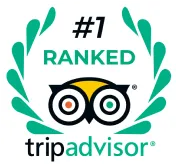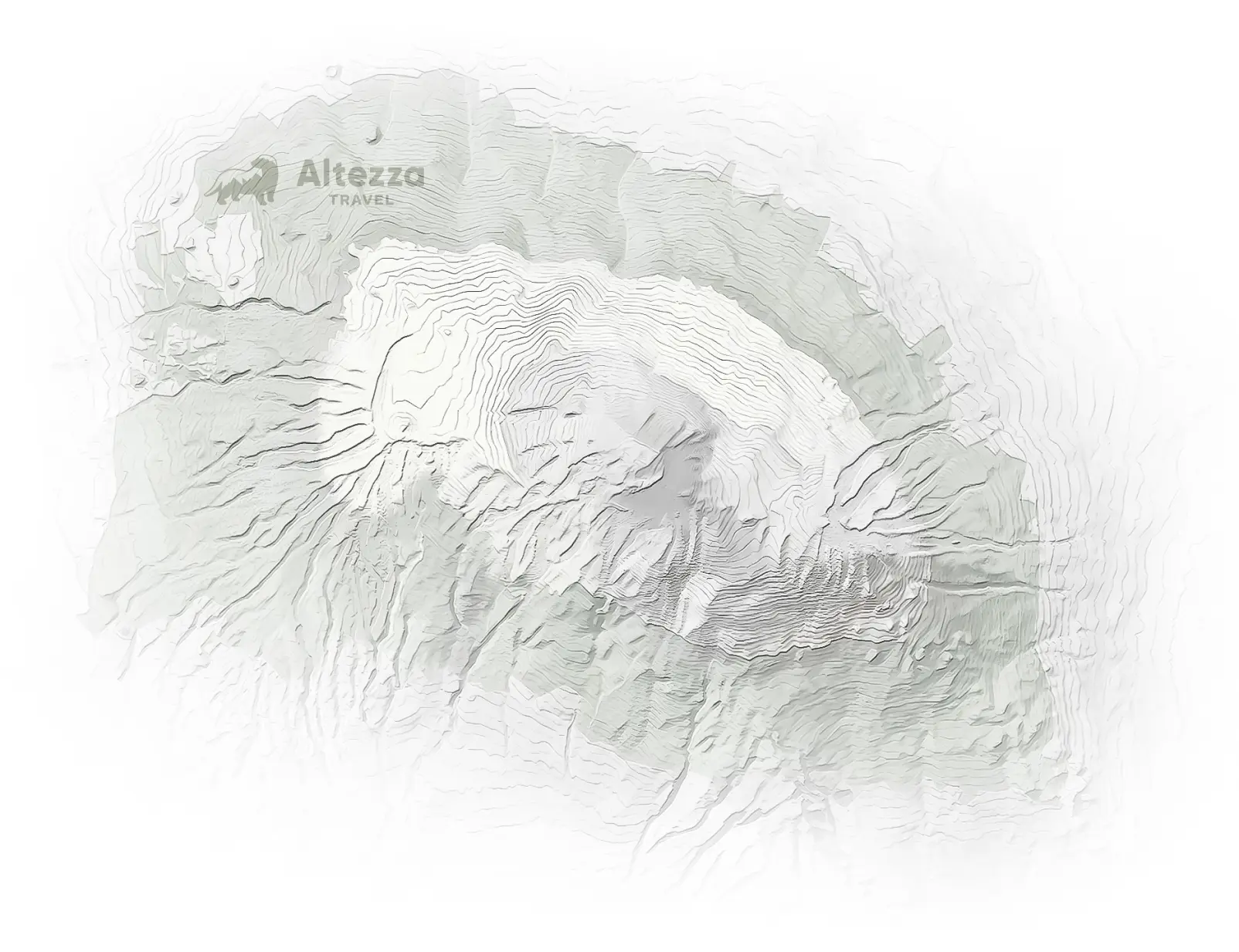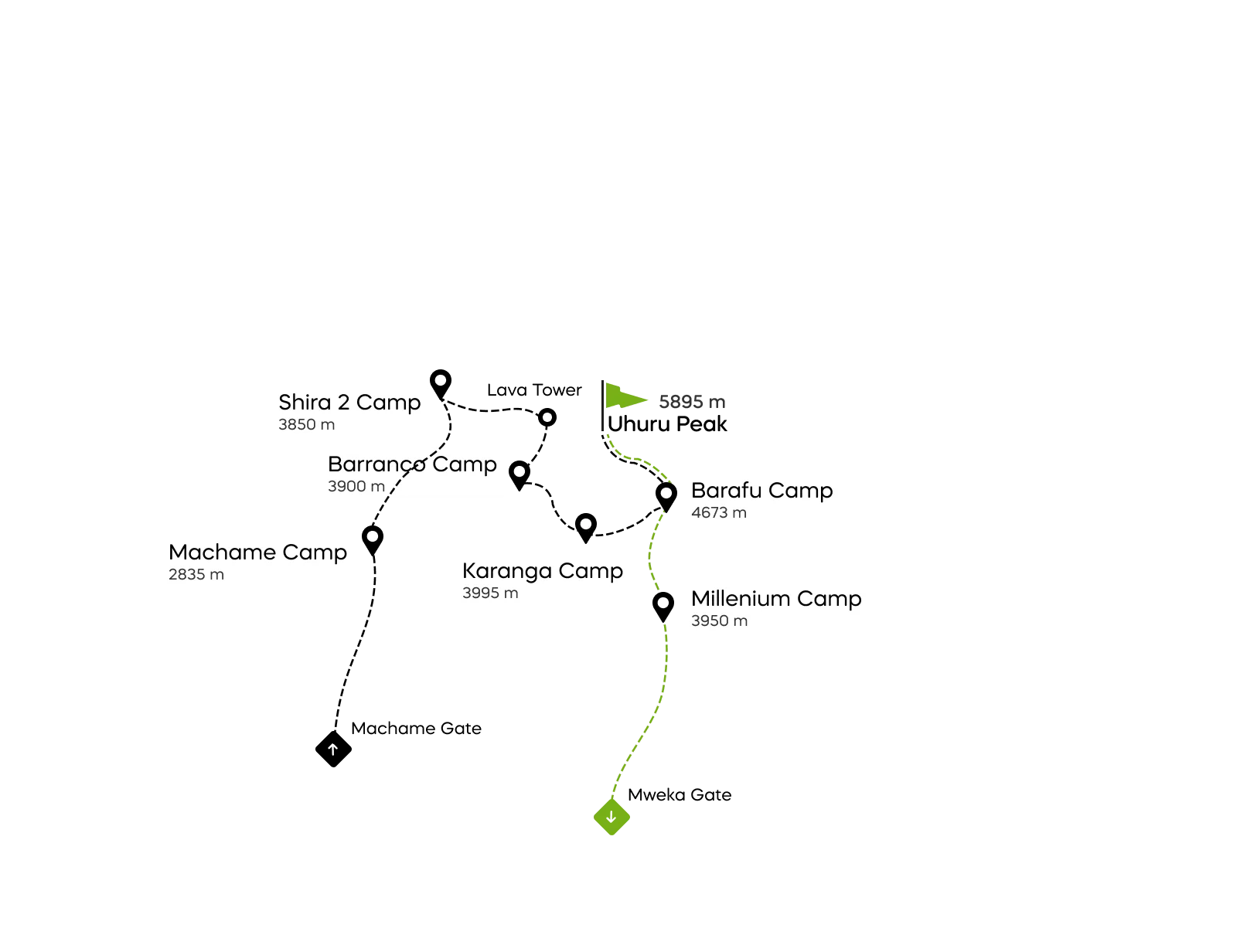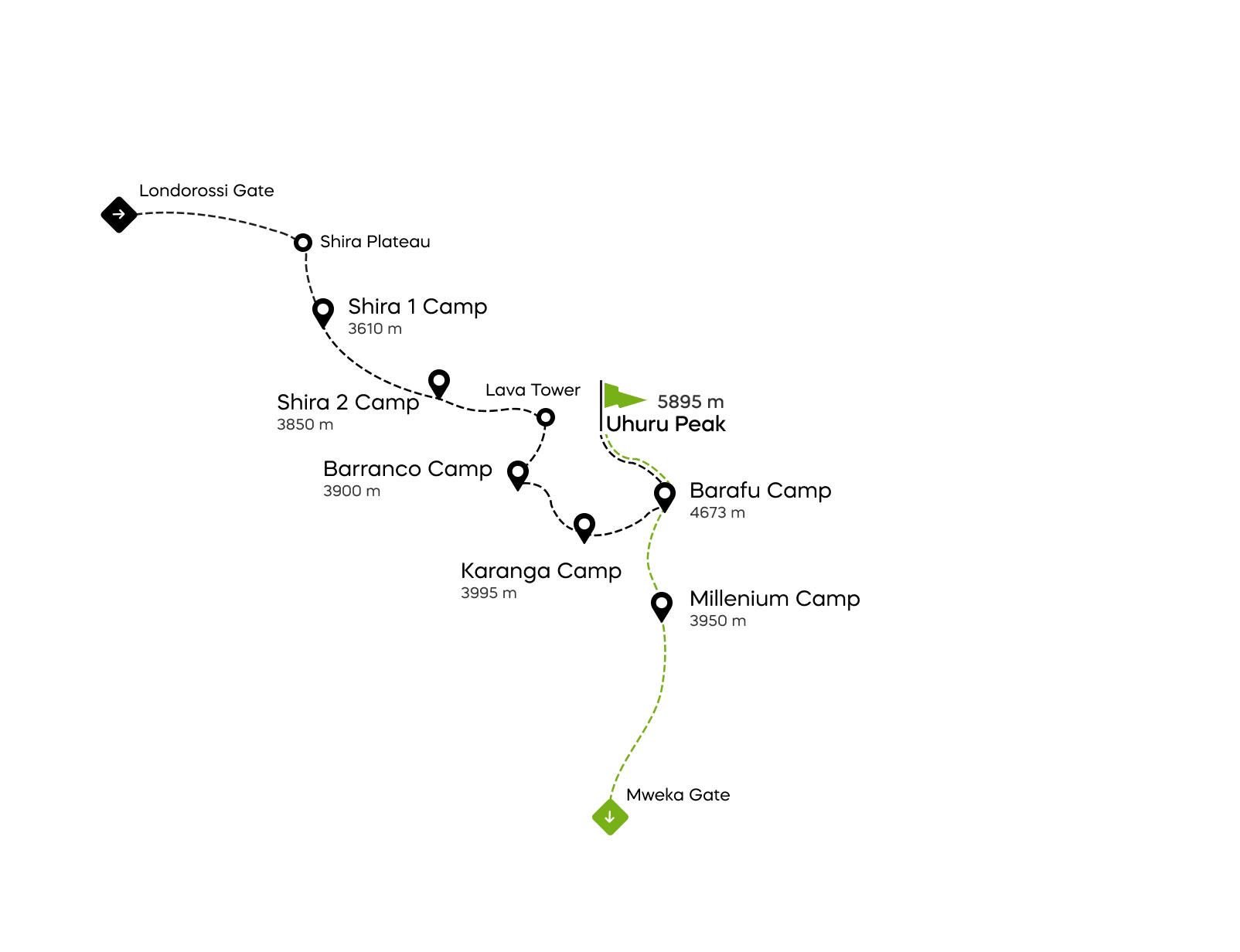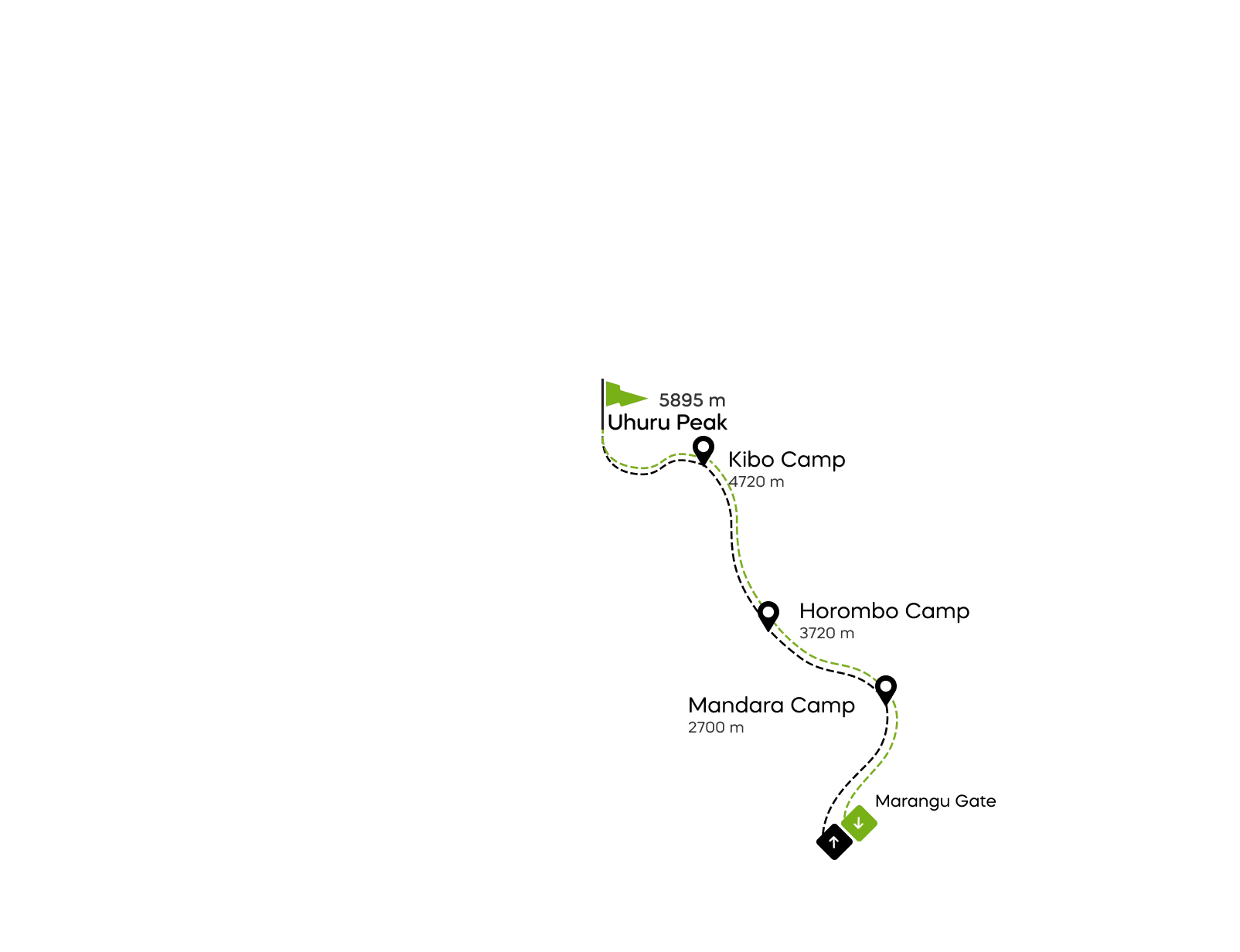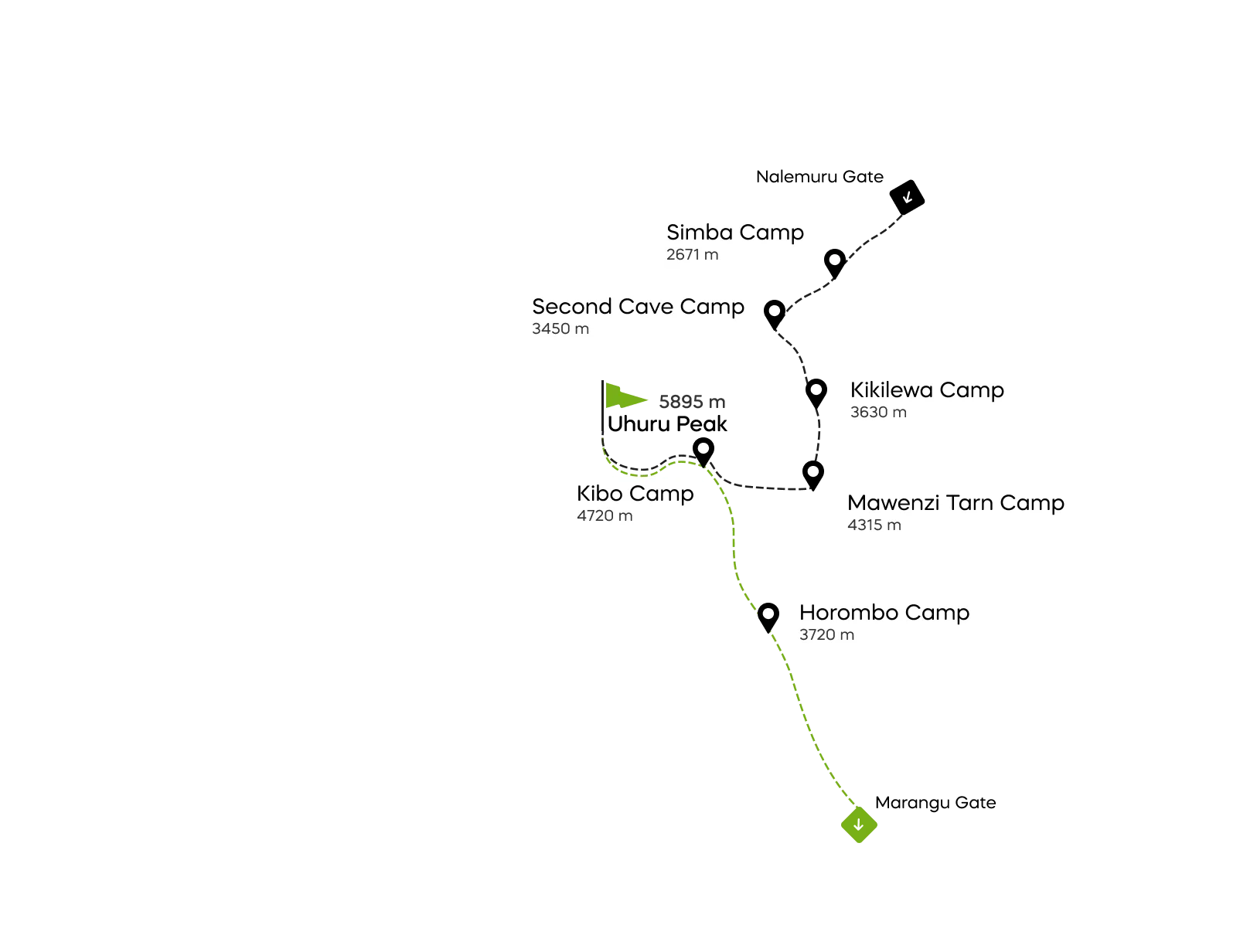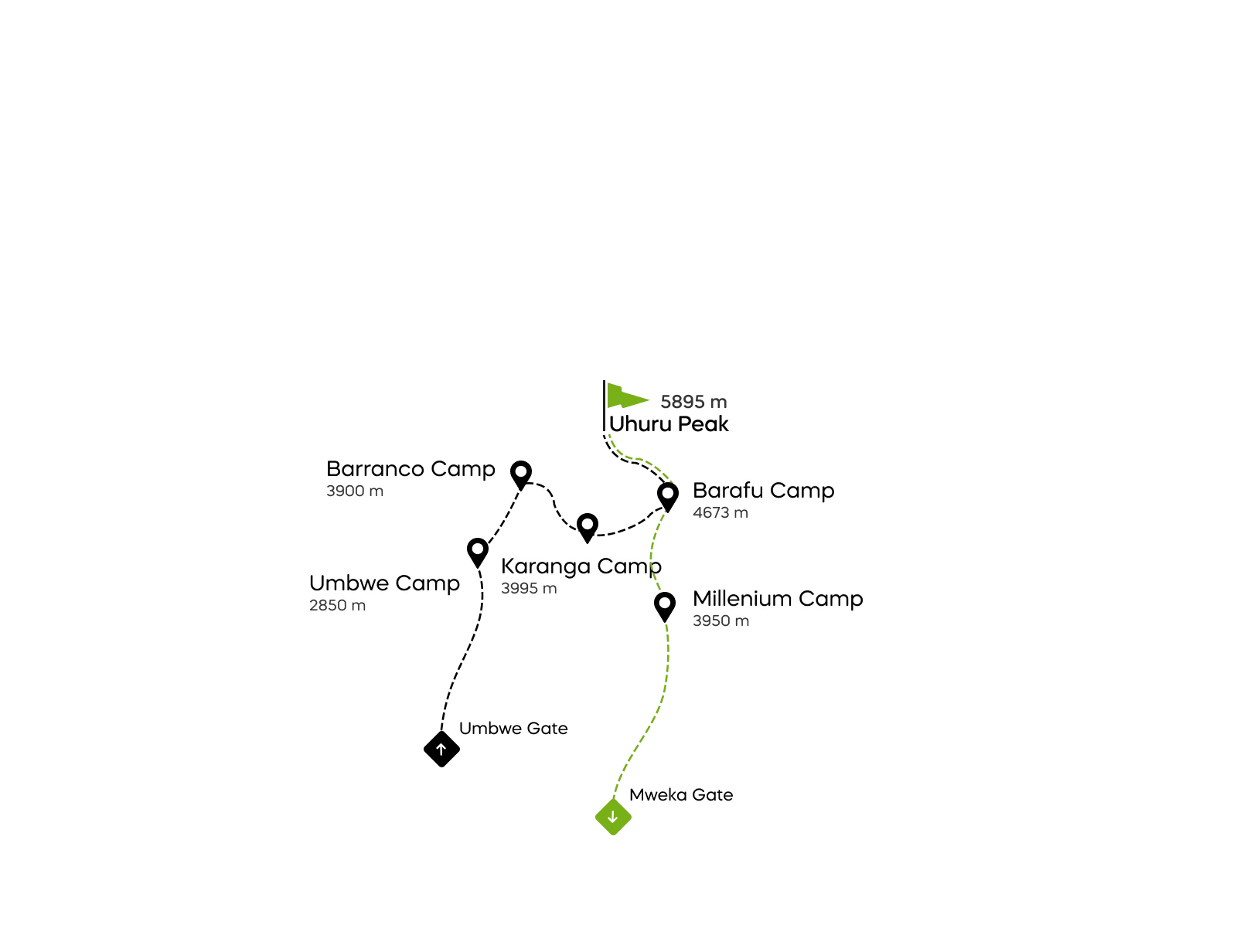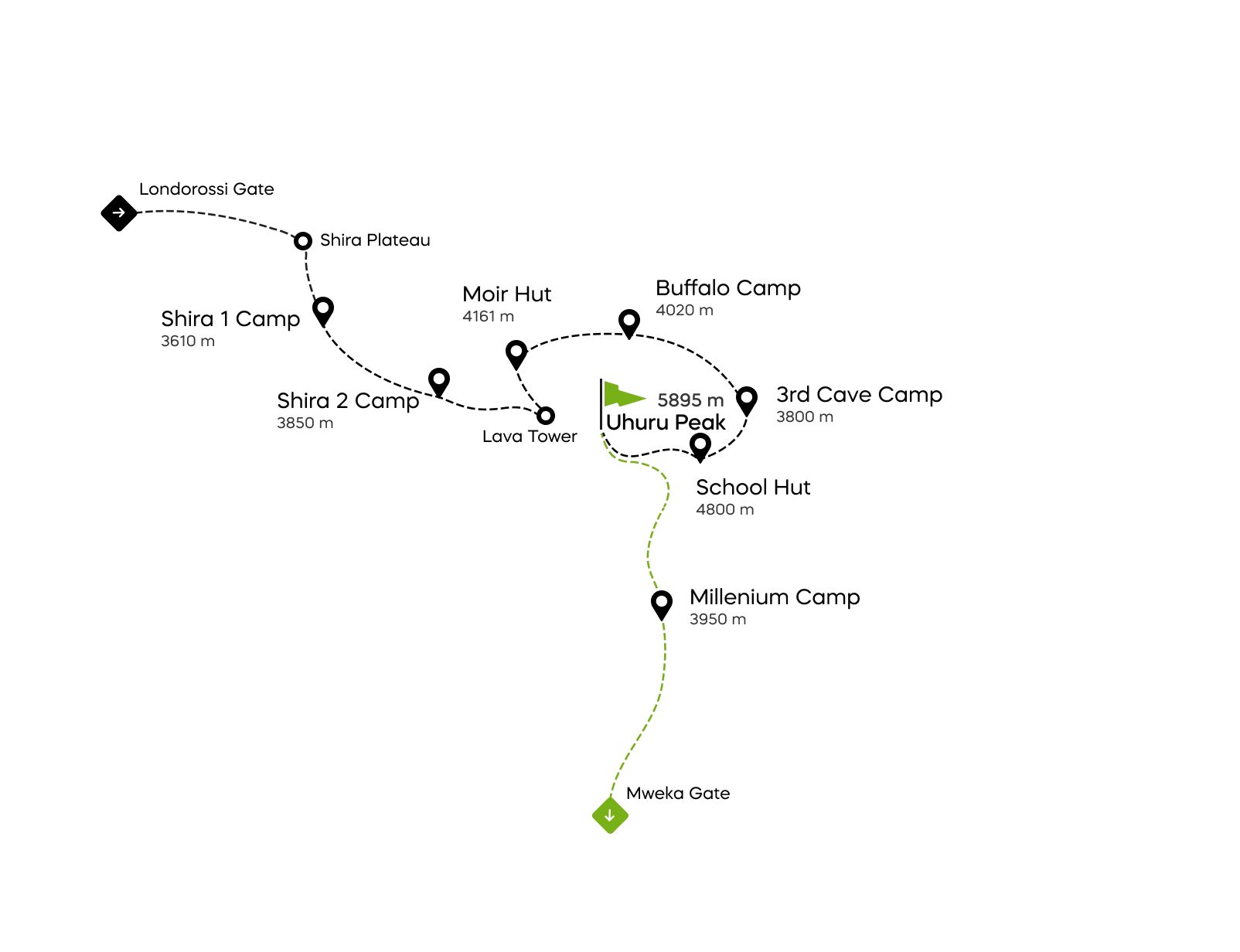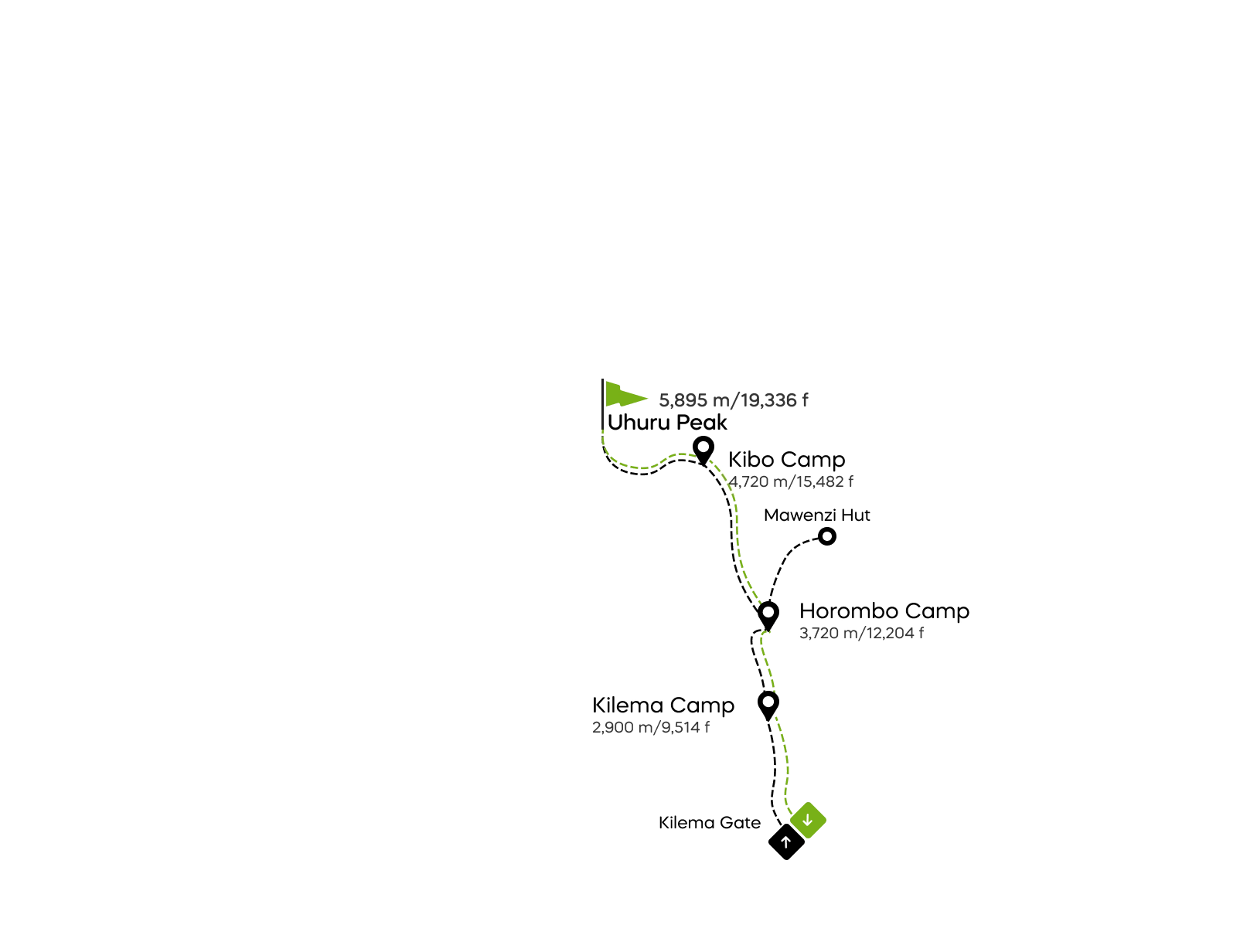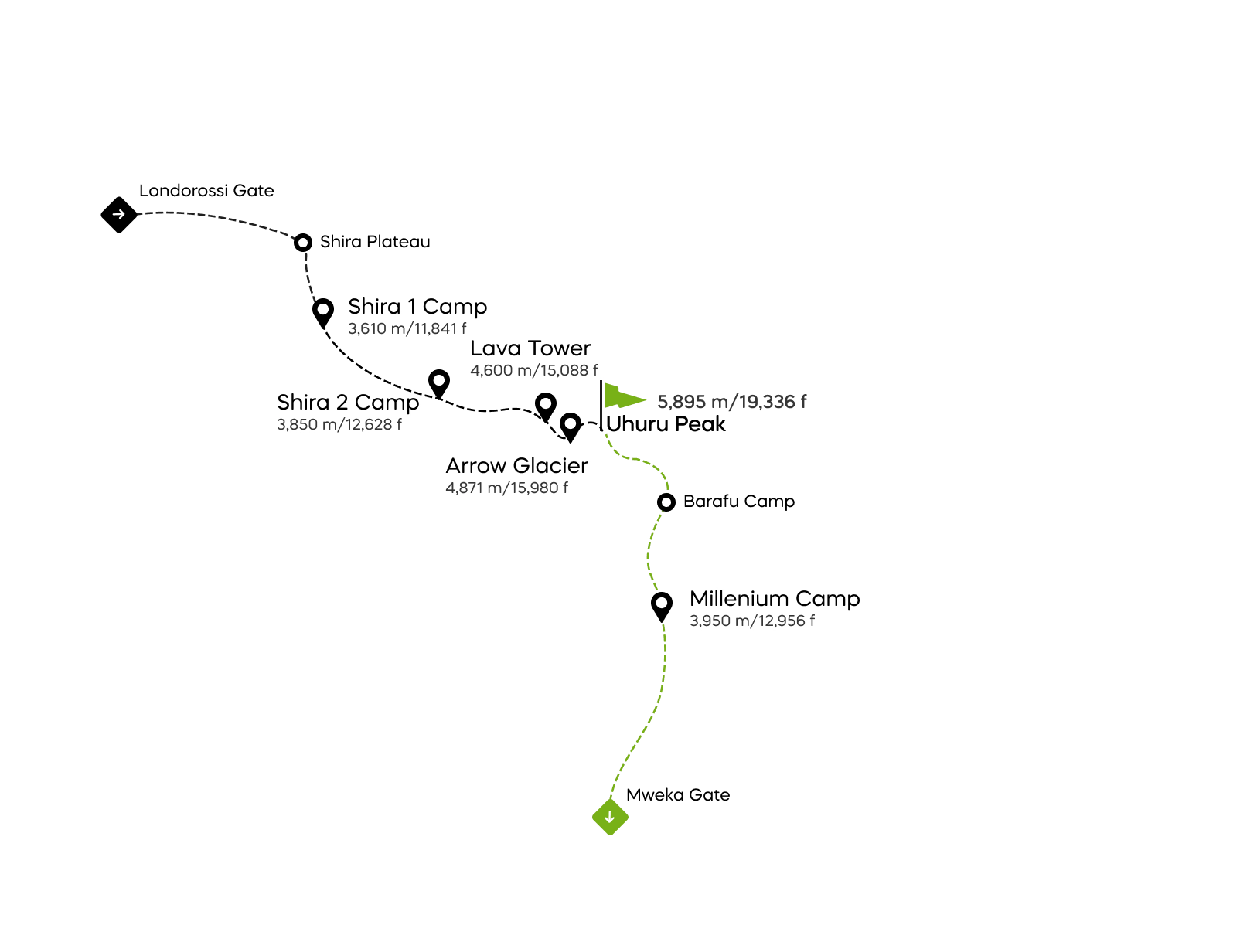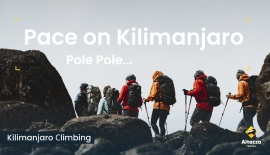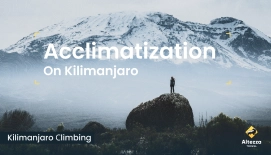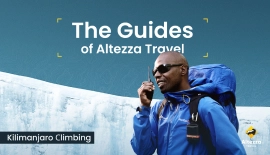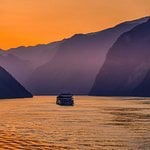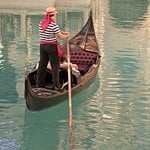
The complete guide to the best Kilimanjaro routes
Everything you need to know about choosing the perfect route for your Kilimanjaro adventure!
There are 8 main routes leading up the highest mountain in Africa - Kilimanjaro. Each Kilimanjaro route boasts its own set of benefits, whether it's smoother acclimatization, breathtaking scenery, hut accommodations, or a quieter trekking experience. In this guide, we will help you choose the ideal route for your trip.
Mount Kilimanjaro routes
Eight main Kilimanjaro routes climb to the summit of the “roof of Africa”. Those are: Lemosho (Shira route), Machame, Marangu, Rongai, Northern Circuit, Umbwe, Kilema, and Western Breach
In addition, there are different itineraries available for most routes. For example, there are 6, 7, and 8-day variations for the Lemosho route. Each of those variations offers a slightly different acclimatization profile. While the choice between a shorter and a longer itinerary might seem trivial, the longer itineraries typically offer much higher success rates due to better acclimatization. If you’re looking to embark on a Kilimanjaro climb and are not sure which route and itinerary is right for you, here we will guide you through every route’s unique advantages and disadvantages.
8 Kilimanjaro climbing routes
Ever wondered how busy Kilimanjaro's trails get? Altezza Travel’s research revealed the overall hiker traffic intel for all popular routes in Jan-Sep 2023. This data is likely to be 98%+ accurate. We’ve added the numbers for each route, including variations, to the list below.
Here is a list of available Kilimanjaro routes together with our insights:
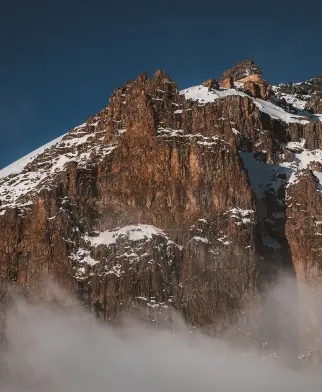
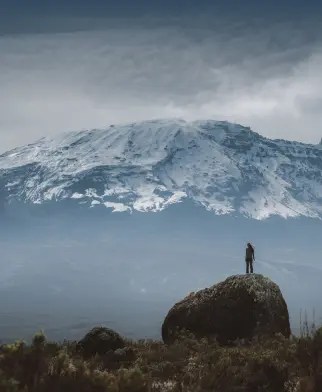
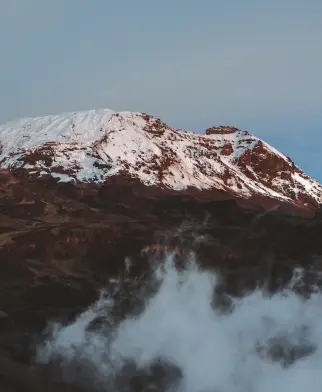
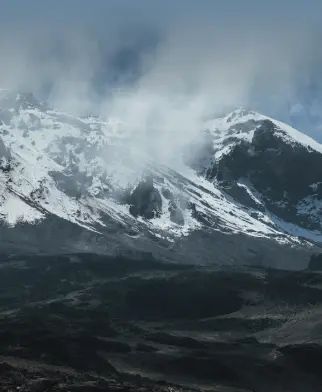
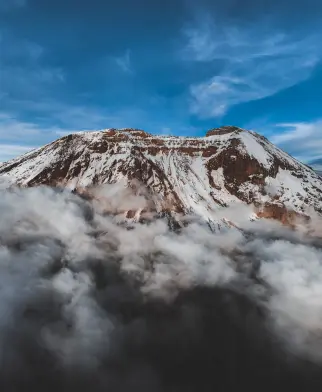
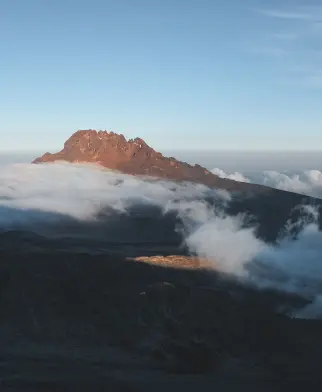
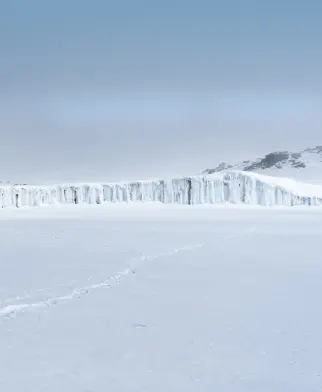
- Lemosho Route (15,675 hikers) is the most scenic path with an excellent acclimatization profile. Though it was relatively quiet a decade ago, it is now gaining a lot of popularity. The 6 and 7-day Lemosho itineraries, sometimes referred to as the Shira route, start from a high-altitude drop-off. You'll be transported to an elevation of 3,407 m/11,177 ft by an off-road vehicle, beginning the hike from this point. This helps to jump-start acclimatization by spending more nights on the mountain.
- Machame Route (16,111 hikers), also known as the "Whiskey Route," stands out as the mountain's most popular path. It offers breathtaking views and robust acclimatization. Starting at Machame Gate on the southern slope of Mt Kilimanjaro, the Machame route begins in the tropical forest and traverses multiple climatic zones to reach the Arctic desert zone in the summit area. The trailhead is only 20 minutes away from our climbing base at Aishi Machame Hotel.
- Marangu Route (14,794 hikers), dubbed the "Coca-Cola route," is another highly popular Kilimanjaro route, and the only route providing overnight stays in huts. The huts offer dormitory-style accommodation. The Marangu route starts southeast of Mt Kilimanjaro at Marangu Gate, ascends the summit, and returns back via the same trail.
- Rongai Route (1,397 hikers), the only route starting from the northern slope, offers an off-the-beaten-path experience and is ideal for climbing Kilimanjaro during the rainy seasons. Passing by Mawenzi, one of Kilimanjaro's volcanic cones, it ensures a unique perspective, with the return journey through Marangu offering views of both sides of the mountain. The Rongai is a great choice if you want to avoid the Barranco Wall.
- Northern Circuit Route, the longest Kilimanjaro route, allows climbers to enjoy a quiet trek and witness the mountain from all sides. This trail, sharing the trailhead with the Lemosho route, receives only 5% of Lemosho's traffic. It's recommended for those seeking extended trekking experiences in remote wilderness with minimal crowds and a gradual slope.
- Umbwe Route (66 hikers) is one of the shortest and least crowded routes in the initial days. The 6-day variation is designed for experienced high-altitude trekkers, while the new 7-day itinerary is suitable for fit beginners. Although the first two days on Umbwe are quite challenging, the subsequent trek becomes more manageable.
- Kilema Route is the exclusive mountain bike trek on Kilimanjaro, running parallel to the Marangu route and converging with it at the Horomobo Huts Camp. Few people know about it, but we are happy to organize specialized expeditions for true mountain biking enthusiasts.
- Western Breach (a few hundred hikers)- this rarely used path is a shortcut to Kilimanjaro’s summit that few operators know how to navigate. The reason is simple: there is a real danger of rockfalls.
While Kilimanjaro offers eight diverse routes to the summit, they aren't entirely independent. Many trails overlap. For example, Rongai and Northern Circuit meet in the School Hut Camp. Lemosho, Machame, and Umbwe converge in Barranco camp and then continue as one route to the summit via the Barranco Wall.
 Get PDF
Get PDF
Expert Opinion
The difference between the Umbwe route and the Machame route comes down to the first two days. The average incline on Umbwe in the first two days is 21.5%, while on Machame it’s 17%. So, Umbwe is slightly more challenging. The upside is that during the first two days on the Umbwe route, you’ll hardly see any crowds.

We at Altezza are now excited to offer a new 7-day Umbwe itinerary with two nights in the Barranco camp - it will be suitable even for beginners.
Camping in the Kilimanjaro Crater is another unique opportunity that we offer. It’s possible to add this experience to any route itinerary, extending it to 9-10 days.
What are the best Kilimanjaro routes?
The answer to this question is tricky because each route has a set of pros and cons. Below we will answer some of the most popular questions.
What is the best route to climb Mount Kilimanjaro?
If you want to hear a quick answer, we would say that the Lemosho route is the favorite of the Altezza Team and our clients. Lemosho offers a great acclimatization profile, scenic views, and the highest success rate according to our analytics for the last 10 years. However, this beautiful Kilimanjaro route has gained a lot of popularity in recent years and now it’s in the top 3 most busy routes. If you’re looking for a more private experience, consider the 7-day Rongai route itinerary. While not as scenic and lacking impressive fauna like Dendrosenecio kilimanjari, it’s more than 10 times less crowded than the popular routes.
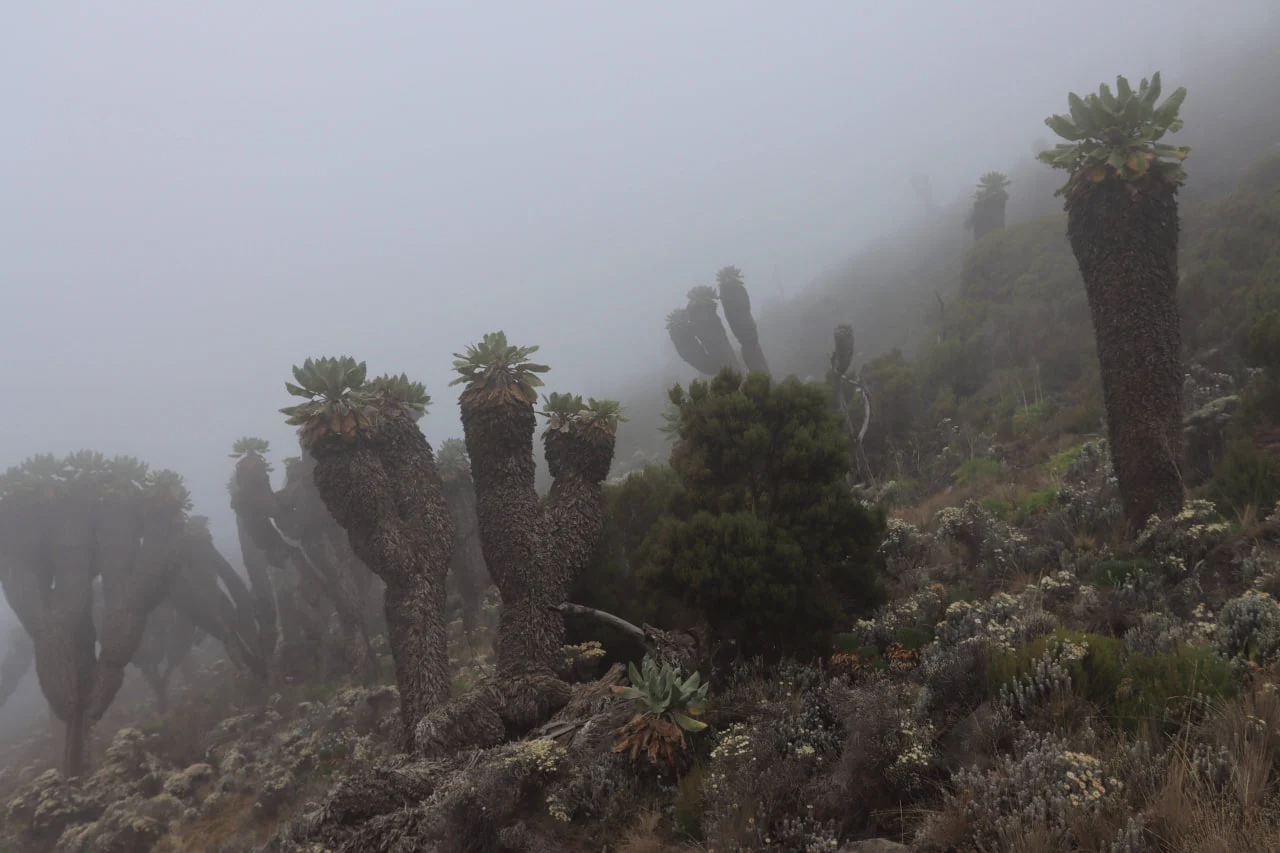
What is the easiest route to climb Kilimanjaro?
The main challenge on Mount Kilimanjaro is not the steep slopes or long daily hikes, but the altitude. So, itineraries that offer the best acclimatization profiles might be considered the “easiest”. Perhaps, we can again highlight Lemosho 7-8, Rongai 7, with Machame 7 and Northern Circuit following close.
Lemosho route 7-day itinerary is the most accessible route on Mount Kilimanjaro for several reasons. Beginning at an elevation of 3500 meters, it eliminates the need for ascending to that altitude during the trek. Short initial daily hikes prevent overexertion, so your body can focus on adapting to the altitude. All overnight stays are at 3500 meters or above, also facilitating better acclimatization. Additionally, the route from the Barafu Camp to the summit is the shortest, saving approximately an hour in travel time.
The Northern Circuit offers great acclimatization due to more days spent on the mountain, but it is more suitable for hikers who are prepared for longer treks every day. For beginners, the above-mentioned Lemosho, Rongai and Machame might be easier options with a higher chance of summitting. If you feel that you need extra time for rest and acclimatization, it’s possible to add an extra acclimatization day at any of the camps to your itinerary.
Which Kilimanjaro route has the highest summit success rate?
According to Altezza Travel’s statistics, 7 and 8-day Lemosho routes have the highest summit success rate at about 98%. The vast majority of climbers who embark on a hike via those Lemosho itineraries make it to the top. Wondering why it’s the case? The answer is simple: great acclimatization profile, many opportunities for “climb high, sleep low”, and enough time at the altitude to gradually adjust. However, most itineraries that last 7 days or longer on the mountain also have great summit success rates.
Important note: summit success rates vary from operator to operator. A budget tour company might have amateur guides and poor equipment, undermining your chances of safely reaching Uhuru Peak. They often claim to have 95%+ summit success rates, while in reality, it is way lower.
On the other hand, a reputable operator will go above and beyond to make sure you get the best chances of summiting and enjoy every detail of the experience. At Altezza, we stand by our commitment to excellence, with proven success rates of up to 98% on routes like Lemosho 7 and 8.
1200+ outstanding TripAdvisor reviews say it all: Altezza delivers stellar Kilimanjaro climbs
Which Kilimanjaro route has the least crowds?
Rongai and Northern Circuit are famous for having the least crowds. The first days of Umbwe will also spoil you with serene landscapes free from large groups of hikers.
A useful tip is to avoid peak seasons - July to September, and January to February. The best time to climb to avoid crowds is just before or after the high seasons - like the first part of March, the beginning of June, or the end of October - when the weather is still good, but there are much fewer climbers on the trails.
Expert Opinion
If you want to avoid crowds, start your expedition on Wednesday or Thursday. Based on our analytics from the last three years, these are the least busy days to start, with half the crowds on the routes compared to starting on any other day of the week!

What is the safest Kilimanjaro route?
Since altitude-related conditions constitute the main risk, all routes with good acclimatization profiles can be considered safe.
However, the main factor is your guides' professionalism and your expedition's overall organization. At Altezza Travel, all our guides have extensive experience, Wilderness First Responder training, and carry comprehensive medical kits as well as oxygen tanks. We have more oxygen systems than all other operators combined. Your guides will conduct two health checks every day, and make sure to address any symptoms of altitude sickness. In the unlikely case of something more serious, they will know how to organize the most efficient first aid and evacuation.
The Western Breach is considered the only dangerous route with the risk of rockfalls, which have claimed numerous lives. As recently as October 2023, the Altezza Travel team found a body of an unlucky climber who attempted to conquer this route on his own or with a different operator. Consequently, we strongly discourage most trekkers from attempting the Western Breach.
Which Kilimanjaro routes should beginners avoid?
Budget tour operators often promote two Kilimanjaro route itineraries: 5-day Marangu route and 6-day Machame route. These routes variations require fewer climbing crew members and supplies, and park fees are also lower. Consequently, they can be offered at lower prices, which many find appealing.
However, these itineraries present significant challenges in terms of acclimatization. Both omit a crucial day in the middle of the journey, essential for gradual adaptation to higher altitudes. As a result, hikers ascend to higher elevations without adequate time to rest and acclimatize. To learn more, watch our short video below.
How to choose the perfect route for your expedition?
Imagine what you want your Kilimanjaro climb to be. Are you a photographer seeking the perfect shot and the most scenic route? An experienced climber looking for a new challenge? Or a parent with teenage children wanting a smooth route with excellent acclimatization?
No matter your goals, we've got you covered! Our Altezza team experts have created 8 questions to guide your choice. Consider these questions below, taking notes or crossing out routes that don't meet your expectations.
By the end, you'll likely decide on one or two routes perfectly suited to your dream Kilimanjaro adventure. Let's begin!
1. Are you looking for the smoothest acclimatization profile and the highest success rate?
In that case, Lemosho 7 and 8-day itineraries could be your number 1 choice for the best route to climb Kilimanjaro. Yet, as we said previously, 7-day itineraries on the majority of routes would offer good acclimatization and strong success rates.
Best routes for summit success rate and acclimatization:
Lemosho route 7-8 days
Rongai route 7 days
Machame route 7 days
2. Do you want to sleep in tents or huts?
Are you looking forward to a cozy sleep under the stars? Or do you prefer the security and shelter of a hut? The Marangu is the only route that offers dormitory-style hut accommodation. So, if it’s a deal-breaker for you, then you’ve already decided on Marangu!
However, sleeping in a tent is more comfortable than you imagine. Our custom-made Altezza tents are designed for comfort, warmth, and weather protection, ensuring a restful night on the mountain. Thousands of clients every year express satisfaction with the comfort provided by sleeping in a snug four-season sleeping bag atop a thick mattress.
Plus, tents offer a unique experience closer to nature, while huts can be crowded at times. At Altezza camps on Mount Kilimanjaro, you will also find large dining tents, as well as toilet/shower tents if you book the option of a private portable toilet/shower.
Routes that offer hut accommodation:
Marangu route 6 days
Routes that offer comfortable tents:
All routes except Marangu route
3. Are you planning to climb Kilimanjaro during the rainy season?
Want to conquer Kilimanjaro during the rainy season? Then Rongai and Marangu offer excellent options. Rongai's northern location receives much less rain, while Marangu's huts provide comfort and safety. Choose your adventure, pack your rain gear, and prepare for an unforgettable Kilimanjaro experience!
Best Kilimanjaro routes for the rainy seasons:
Marangu route 6 days
Rongai route 7 days
4. Do you want to see the best views Kilimanjaro has to offer?
Seeking to experience the full spectrum of Kilimanjaro's splendor? Consider trails like Lemosho (Shira route), Machame route, or Umbwe route. These western and southern trails traverse all climatic zones, allowing you to witness the stunning transformation from lush rainforests to legendary glaciers. In addition, only on that side of Mount Kilimanjaro, you’ll be able to see unique plants like Kilimanjaro Giant Groundsels and a variety of diverse landscapes. The southern slopes of Kilimanjaro receive significantly more precipitation than the northern slopes, leading to a higher diversity of plant life. This is a major reason why these routes are more scenic.
The northern routes - Rongai and the Northern Circuit are more modest in terms of the scenery they offer.

It's important to note that Marangu is unique among other routes as it shares the same path for both ascent and descent. While offering picturesque views, this characteristic may constrain the diversity of landscapes you encounter. Additionally, the shared path contributes to higher congestion on Marangu, as ascending and descending groups intersect along the route.
Most scenic routes:
Lemosho route 6-8 days
Machame route 6-7 days
Umbwe route 6-7 days
5. Do you have prior trekking experience or acclimatization?
Whether you're a seasoned trekker or a beginner, Mount Kilimanjaro offers something for everyone. Seasoned trekkers accustomed to higher altitudes may consider shorter 5-6 day routes like Machame 6 or Umbwe 6. These routes demand a stronger physical base and a well-planned acclimatization strategy, but the faster pace and diverse landscapes offer a rewarding adventure for experienced climbers.
Best routes for beginners:
Lemosho route 7-8 days
Machame route 7 days
Rongai route 7 days
Northern Circuit route 8 days
Routes for trekkers with experience and/or prior acclimatization:
Lemosho route 6 days
Machame route 6 days
Marangu route 5-6 days
Umbwe route 6
Rongai route 6 days
6. How much time and funds are available for your trip?
If you’re short on time and want to save money it might be tempting to opt for a shorter itinerary like Machame 6 or Marangu 5. However, keep in mind that shorter itineraries are significantly more challenging and have lower summit success rates. So we strongly recommend considering 7-day itineraries if you don’t have previous acclimatization or serious trekking experience.
In addition, we offer special luxury expeditions with an even higher level of comfort and service in every respect. The premium package elevates the experience with luxury hotels before and after the climb, spacious walk-in tents, gourmet meals with diverse options, bottled water, camping beds, premium sleeping bags, portable toilets, satellite phones, and a larger climbing crew. Contact our Kilimanjaro experts if you’d like to learn more.
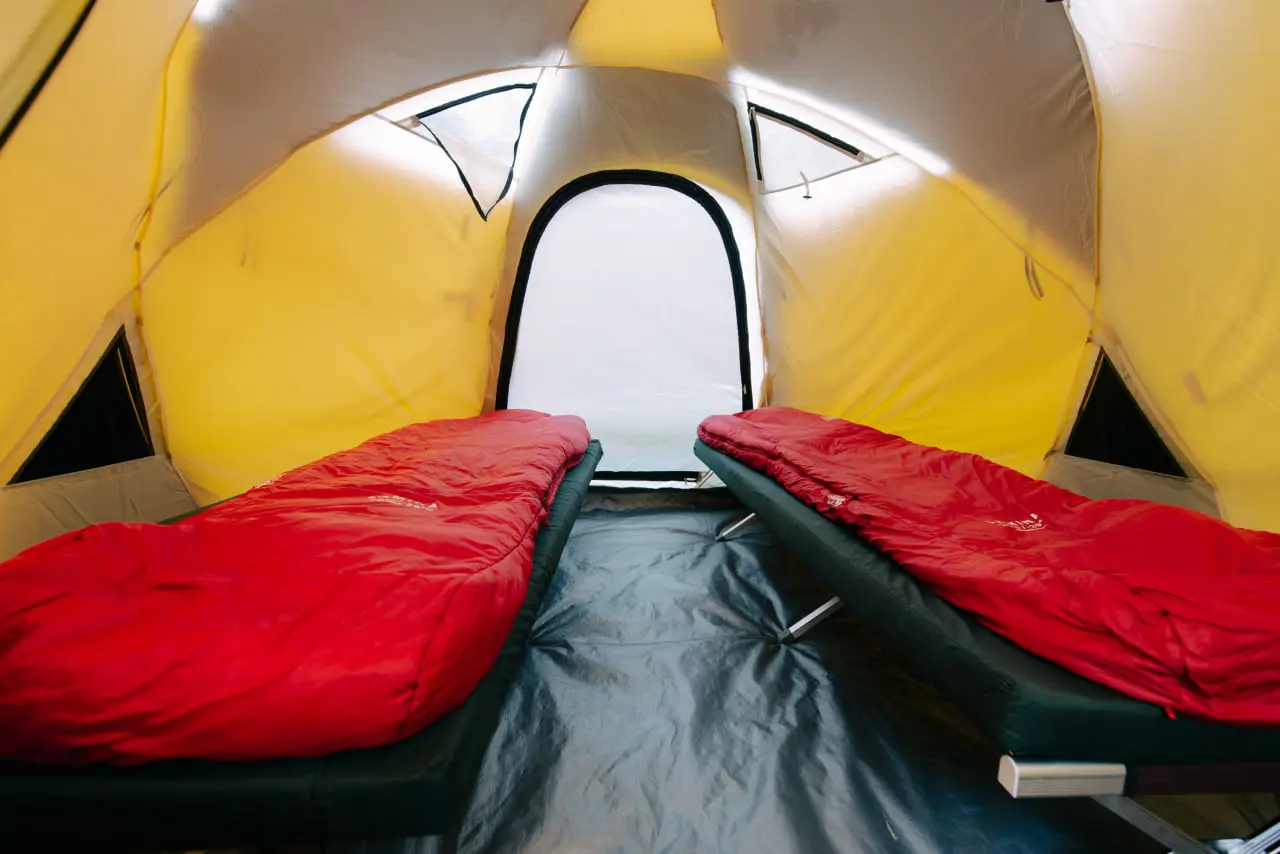
If you are lucky to have an extended vacation, think about adding a wildlife safari to your Kilimanjaro trip. Alternatively, you might consider spending a few days on Zanzibar or exploring one of the other incredible islands in the Indian Ocean. This way, you can fully immerse yourself in everything the remarkable country of Tanzania has to offer!
7. Do you want to include unique experiences like camping in the crater?
For a truly unique climbing Kilimanjaro experience, consider adding crater camping to your expedition! Altezza offers 9-10 day itineraries that include the incredible opportunity to camp in the crater of Kibo, the highest of the three volcanos on Kilimanjaro. Imagine spending a night in an ancient volcanic crater at 5750 meters under the bright Milky Way. Less than a hundred lucky travelers (out of 40,000+) get to experience that every year. An itinerary that includes crater camping typically takes 9-10 days. Our specialists will be happy to help you design an expedition according to your preferences.
Routes to climb Kilimanjaro that can include crater camping:
All routes except Marangu
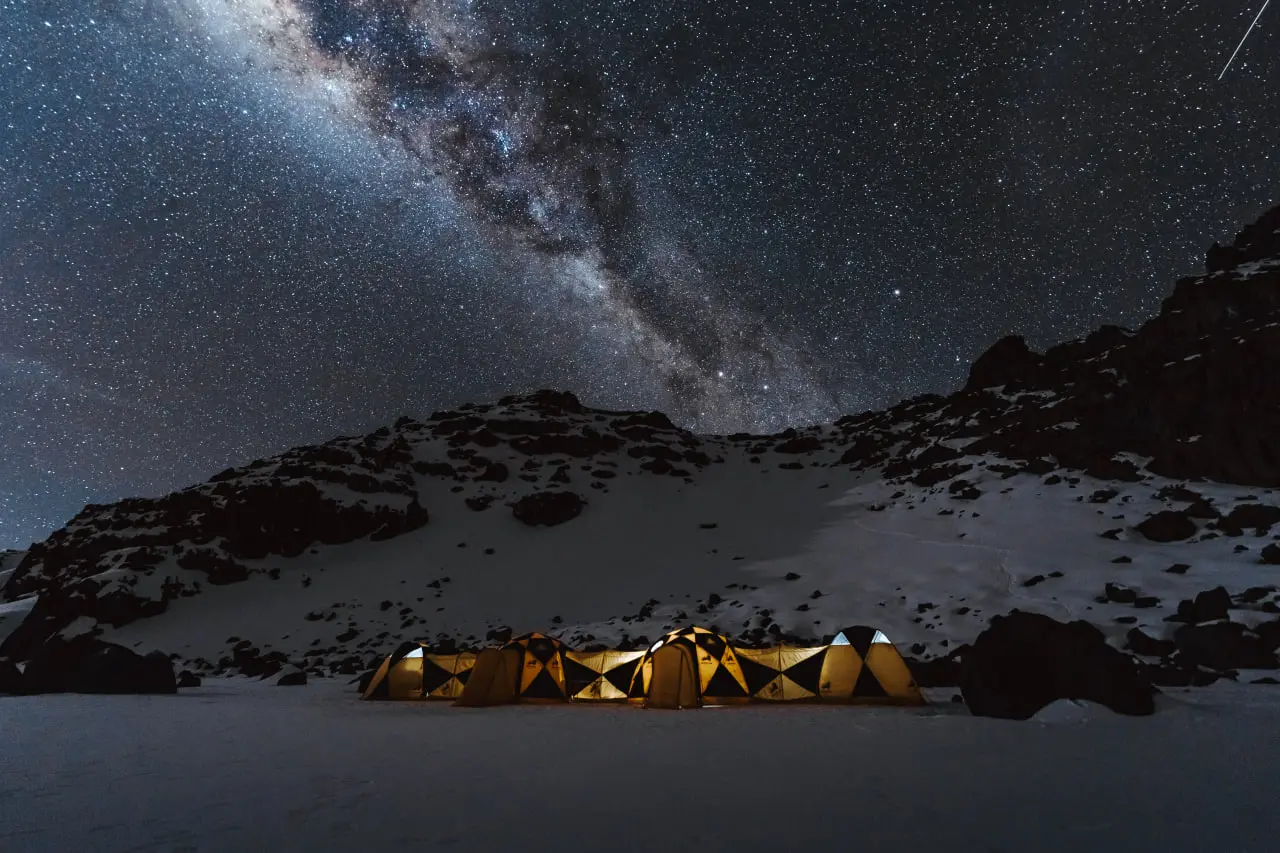
8. Are you interested in extreme sports like paragliding, technical climbing, or mountain biking?
Mount Kilimanjaro beckons not just climbers, but extreme sports enthusiasts too! If you’re into mountain biking, we are now happy to offer a specialized expedition along the Kilema route - a unique mountain bike trail on the highest freestanding mountain in the world - Kilimanjaro!
If you want to soar above the “roof of Africa” under the wing of a glider, scale technical peaks such as Mawenzi, or set up a large-scale sports event on the mountain, we can organize that too. Altezza Travel was trusted to organize numerous high-profile events for Red Bull, Wings of Kilimanjaro, and Nimsdai, among many others. In such cases, the choice of the route is individual for each project.
Contact us today and our experts will be happy to craft a custom Mount Kilimanjaro experience that ticks all the boxes.
Final words
We hope that this guide helped you to learn more about Mount Kilimanjaro routes and choose the right one for your dream expedition!
Still have questions? - Feel free to reach out to our Kilimanjaro experts, or check out our YouTube channel, TripAdvisor page, and Altezza blog with dozens of articles on everything related to Kilimanjaro.










